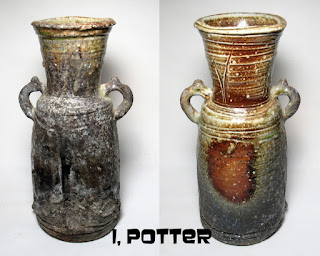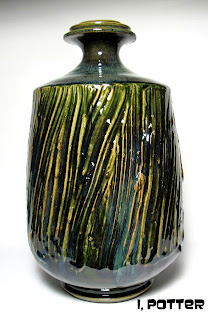Illustrated
is a detail shot of two vases with saucer style mouths that are flanked by a
series of rings that allow the glaze to pool in little depressions made using
the end of a wood tool. I like putting these depressed areas at various points
around my pots to help collect and build up the glaze as it moves to create
richer and visually fixating points for the various pieces. The use of this
technique works well with not only glaze but slip as well as I usually wipe of
the slip from the high points creating yet another visual texture to the
surface which can be seen on the saffron, iron yellow vase on the right while
the vase on the left clearly shows what happens as the Oribe pools and creates
blue-green tendrils in each of the rings. I realize this is not rocket science
but the rich, more diverse and engaging you can make the surface, the better
the story the pot will have to tell and that is what I am constantly after.
"The
next pots is always going to be better than the previous one, that's your
motivation." John Leach







